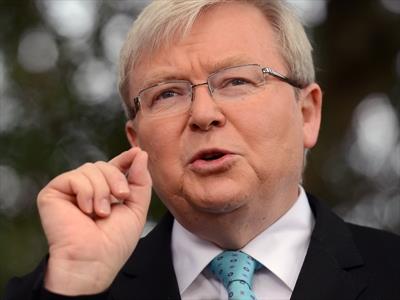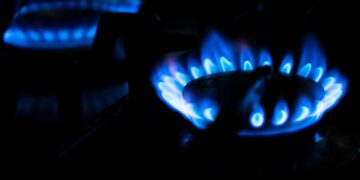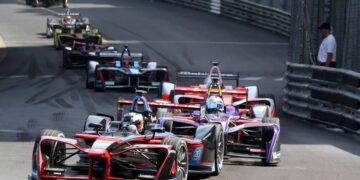
SOME KEY ISSUES FOR THE 2013 FEDERAL ELECTION
ECONOMY
Australia’s economy is growing modestly while other industrialised countries are still in or emerging from recession. Interest rates are low, inflation is under control, the jobless rate remains low – but is expected to rise. Voters remain concerned about livings costs. Job security is an issue, with sectors like retail and manufacturing recently shedding hundreds of workers. Households are saving more, which is good for debt reduction. But they are spending less, which is bad for business. Labor promises to support for jobs and growth, and seek a better relationship with business. The coalition offers a strong and prosperous economy and cuts to business red tape.
BUDGET
The federal budget is in deficit and will remain in the red until 2016/17 – that’s a year longer than expected in May. Government revenues have fallen by about $3 billion a week since the budget, mainly due to weaker receipts from individuals and companies. The revenue issue looks likely continue, as the government waits for the mining investment boom to transition to the production phase and for the non-mining sector to pick up. Big spending is earmarked for disability and education. The government says it has “responsible” savings in the bag to pave the path to surplus. The coalition says only it can be trusted to deliver surpluses, and cut debt and government spending.
LEADERSHIP
Who’s the better person to lead Australia? Rudd’s return to the Labor leadership immediately gave the ALP new stability and improved its election prospects. The government will be hoping to capitalise on Rudd’s popularity in the electorate. The coalition argues Rudd hasn’t changed from the leader who was bad enough to be dumped by his own party in 2010. Rudd says he’s learned. The coalition has maintained discipline and is firmly behind Abbott. Labor says Abbott has tried to create an unrealistic sense of chaos and instability and pegged him as too negative. Rudd’s aiming for positive statements about Australia’s future. The coalition says Labor is dysfunctional and needs time in opposition to decide what it stands for.
BOATS
The steady flow of asylum seeker boats from Indonesia and Sri Lanka has been a sore point with voters. Labor under Rudd in 2007 dismantled most of the former Howard government’s measures. Gillard from 2010 promised to resolve the boats issue. The government then reopened offshore processing centres on Nauru and PNG’s Manus Island and is working with Indonesia to crack down on people smuggling. But the boats kept coming. Rudd’s return resulted in a new hardline approach. Boat arrivals will no longer be resettled in Australia and will be sent to PNG or Nauru for processing and resettlement there. Abbott supports the extension of offshore processing but doubts Labor’s ability to implement the Rudd plan. The coalition promises a return to Howard-era measures such as turning back the boats where it’s safe to do so. He wants work with Indonesia to stem the flow of boats in his first term. So far, Indonesia has signalled it won’t “cooperate” on a tow back policy. Rudd claimed the coalition policy risks a diplomatic incident with Indonesia, which Abbott utterly rejects. But whoever wins, it looks like the resettlement plan will remain.
CARBON TAX
Abbott wants to make the election a referendum on the carbon tax, which has been a factor in electricity price rises. Rudd’s tried to neutralise this by promising the government will “terminate” the $24-$25 per tonne fixed price and move to a market-based emissions trading scheme linked to Europe a year earlier. This will deliver cost of living benefits because the carbon price will be much lower at around $6, Labor says. The coalition disagrees, arguing a floating carbon price still risks higher power prices that will hurt business and families. Abbott plans to repeal the carbon tax legislation, but keep the tax cuts and welfare payments associated with it. Labor earlier this year deferred a planned round of tax cuts for 2015 after conceding international carbon prices were likely to be lower than expected.
EDUCATION
A Labor flagship policy, under Julia Gillard, aimed at raising the national education system to the top five in the world by 2025. It starts with a new schools funding model delivering more than $15 billion over six years to the states and territories that sign up. NSW, ACT, South Australia and Tasmania did. Rudd sent Bill Shorten out to get the agreement with Victoria. Queensland, WA and the NT remain outside. The coalition had questioned the validity of the reforms but has now backed “certainty” for schools. The coalition’s also promising communities will be given more control over schools and to scrap Labor’s school kids bonus cash payments to parents.
DISABILITY
Labor is setting up a national disability insurance scheme to cover 460,000 Australians from 2018/19. The legislation had bipartisan support when it came before parliament earlier this year. The cost will be covered by the Commonwealth and the states, and a rise in the Medicare levy to two per cent from next year. Labor claims full credit for the scheme. The coalition shares the credit, for backing it.
MINING TAX
Labor set up the minerals resource rent tax to “share the benefits” of the mining boom. No delivery yet on the billions of revenue it was forecast to generate for government coffers. Last estimate was about $200 million for the 2012/13 year – well down on $2 billion. The Greens question say the 30 per cent tax on the super profits of coal and iron ore producers must be change to stop miners exploiting loop holes and should be widened to other commodities, like gold. The government says because the tax is profits-based, revenues will naturally ebb and flow. The coalition says it’s a failure and plans to scrap it.
BROADBAND
This could be a deal breaker for technology-minded voters. Labor’s $37 billion high-speed national broadband network will cover 93 per cent per cent of the population, run fibre optic cable to buildings and deliver download speeds of up to 100Mbps. The coalition’s NBN is cheaper at about $20 billion, runs fibre to the corner and uses copper wire to connect to premises, will deliver download speeds of up to 50Mps or more and be completed two years earlier. – AAP








 Explore top-rated compensation lawyers in Brisbane! Offering expert legal help for your claim. Your victory is our priority!
Explore top-rated compensation lawyers in Brisbane! Offering expert legal help for your claim. Your victory is our priority! 

 "
"


